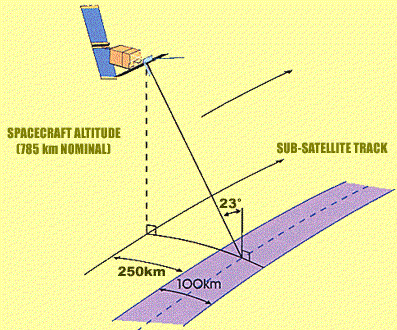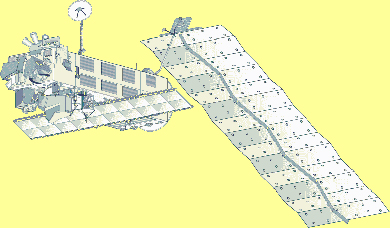


| Orbit | 705 km, 10:30 a.m. descending node (Terra) or 1:30 p.m. ascending node (Aqua), sun-synchronous, near-polar, circular |
| Scan Rate | 20.3 rpm, cross track |
| Swath | 2330 km (cross track) by 10 km (along track at nadir) |
| Telescope | 17.78 cm diam. off-axis, afocal (collimated), with intermediate field stop |
| Spatial Resolution | 250 m (bands 1-2) 500 m (bands 3-7) 1000 m (bands 8-36) |
| Design Life | 6 years |